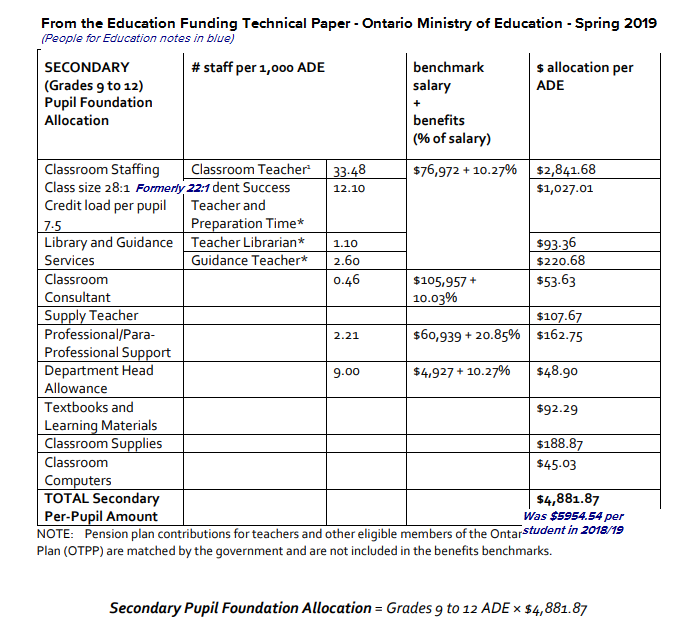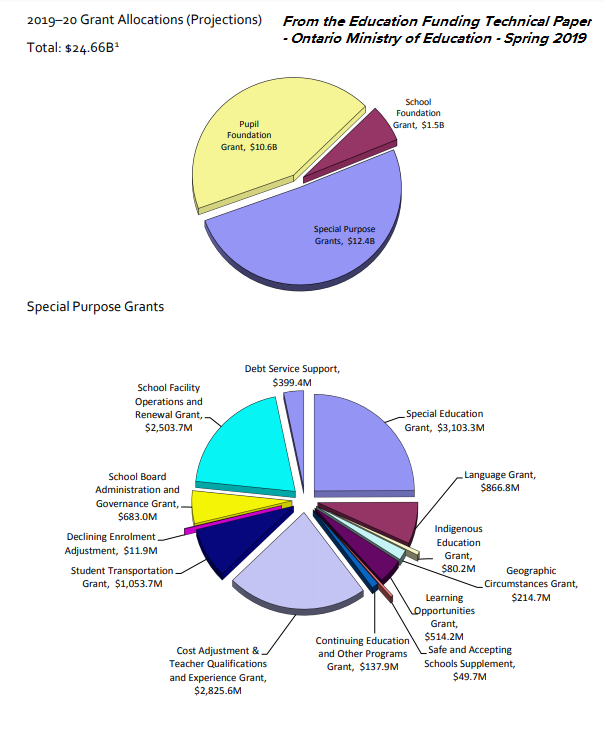How does the province fund school boards?
Every day, we hear another story from a school board about cuts to funding and/or teachers. But how does this square with the different messages coming from the provincial government?
To understand the competing narratives, it is necessary to understand how the province provides funding to school boards and why each board’s funding is different.
The education funding formula is really a formula!
School boards receive their funding from the province based on a number of factors, including things like the numbers of students in different grades, numbers of schools, numbers of students who speak neither English nor French, proportion of students who may be at risk of struggling in school (based in part on a board’s demographics), and whether the board has a high number of small, remote schools.
In order to receive the funding, boards provide detailed reports about their students, their demographics, and their schools to the Ministry of Education. Each of those things “generates” different amounts of funding.
Most funding based on numbers of students along with average class size rules
Nearly half of a board’s funding is allocated through the Pupil Foundation Grant.
For this funding, boards report to the province how many students they have in kindergarten, grades 1 to 3, grades 4 to 8, and in secondary school. Then, a formula is applied based on the number of staff or funding per 1000 students in the board’s average daily enrolment (ADE) for those grades. The formula also takes into account the provincially mandated average class sizes for each set of grades.
This establishes how much the board will receive to cover the costs of classroom teachers, education assistants, classroom supplies including computers, library and guidance professionals, preparation time, specialist teachers in elementary school and student success teachers in high school, and professional and para-professional supports.
This year, the province changed the funding for students in grades 4 to 8, and in secondary school, basing it on higher class sizes. (For example, last year the formula provided funding for a total of 58.78 classroom staff per 1000 secondary school students. This year, the formula provides funding for 45.58 staff per 1000.) As a result of the changes, funding in the Pupil Foundation Grant was cut by $633 million.
Over the next four years, school boards will receive some funding to help them adjust to this substantial cut, so that the loss of staff happens gradually. But ultimately, there will be thousands fewer teachers in Ontario schools.
The provincial government also eliminated the Local Priorities Fund, which provided a total of $235 million to boards to pay teachers and other staff – in particular staff supporting students “at-risk.”
Along with the Pupil Foundation Allocation, boards are allocated funding in a School Foundation Grant for principals, vice-principals, office staff and office supplies. It is also based on a formula that provides funding for these staff depending on number of schools and number students per school.
Funding for special education, Language Programs and students at risk
 Boards also receive a number of special purpose grants – each one based on its own formula. These grants are allocated using a combination of things: for example enrolment data, information from Statistics Canada, geographic information about the board, and principals’ reports on their school populations. In this way boards receive funding for everything from busing to Indigenous education.
Boards also receive a number of special purpose grants – each one based on its own formula. These grants are allocated using a combination of things: for example enrolment data, information from Statistics Canada, geographic information about the board, and principals’ reports on their school populations. In this way boards receive funding for everything from busing to Indigenous education.
Next week, we’ll explain how special education funding works.
